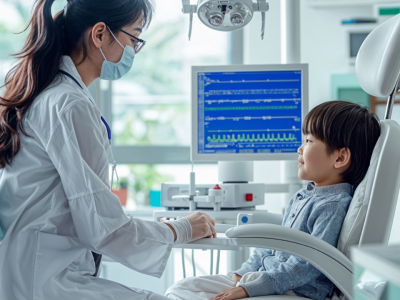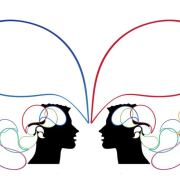
Research shows that 1 in 8 women will get a breast cancer diagnosis in the United States in the course of their life. As the years go by, this estimate is likely to change. There’s also a good chance that you already know someone who has fallen victim to breast cancer.
Regardless, there is hope. But at the same time, most individuals lack the necessary awareness regarding breast cancer. Lack of awareness can be caused by many factors, such as limited information or access to it, cultural taboos, fear of seeking medical attention for a specific body part, a dread of being judged, and general misconceptions about the subject.
On the flip side, having awareness regarding breast cancer can enable early detection and timely medical interventions. It can also encourage self-advocacy and participation in healthcare discussions, ensuring you receive the best care.
So, by knowing the causes and symptoms of breast cancer, you can recognize potential warning signs and seek medical attention quickly. But what are these causes and symptoms? Below, we will delve into the intricate details of breast cancer, exploring its causes and the common symptoms that individuals should be aware of.
Causes of Breast Cancer

1. Family background
Your risk of getting breast cancer can increase if a first-degree relative has ovarian or breast cancer. Your sister, mother, daughter, father, son, and brother are first-degree relatives. But with proper awareness and knowledge, individuals can know where they stand regarding breast cancer.
Nowadays, healthcare professionals are working tirelessly to promote awareness regarding breast cancer causes, symptoms, and lifestyle changes to prevent it. Most of them are involved in research and higher academic pursuits to understand breast cancer further and devise mitigation strategies.
Such professionals often pursue advanced programs like online MPH in global health to approach healthcare practices and issues from a global perspective. Through comprehensive coursework, students learn in-depth about breast cancer epidemiology, prevention, detection, and treatment. Online programs enable them to continue education alongside committing to research and fieldwork.
2. Reproductive fitness
Women may have a greater chance of breast cancer depending on when their periods start and how often they get them. There’s a higher chance of developing breast cancer if you first started menstruating before the age of 12 and went through menopause after the age of 55. These women are exposed to hormones for longer, raising their probability of breast cancer.
3. Age
Your likelihood of getting diagnosed with breast cancer increases with age. However, breast cancer is more common among people over 50.
4. Genetics
Cancers originate due to unregulated cell division brought on by genetic alterations. Women with BRCA1 or BRCA2 gene mutations are likelier to develop breast or ovarian cancer.
5. Thicker breast tissue
One of the preliminary examinations doctors use to identify breast cancer is mammography. More fat is present in the breast tissues when dense, making it more difficult for medical professionals to find malignancies. It ultimately increases the risk of breast cancer in those with denser breast tissue.
6. Medical background
Women with a history of cancer are sadly more susceptible to breast cancer since it often returns. Atypical hyperplasia and lobular carcinoma in situ happen to be two additional non-cancerous conditions that raise the risk of breast cancer. Women who get radiation treatment to the breasts or chest before age 30 are more likely to get breast cancer later in life.
Early Breast Cancer Warning Signs
Some symptoms and signs of breast cancer are:
- A lump in your underarm or breast that doesn’t go away is a typical sign of breast cancer. On mammography, your doctor can typically detect a lump before you do.
- Swelling in the armpit area or close to the collarbone. Inform your doctor if you get swelling since it may begin before you discover a lump.
- Tightness and pain, even though lumps typically don’t hurt. Some might make you feel stingy.
- A breast region that is flat or recessed – this might occur due to a tumor you cannot see or feel.
- Breast alterations include variations in your breast’s size, shape, texture, or temperature.
- Alterations to your nipple, such as one that: pulls inward, has dimples, burns, itches, and forms sores.
- A strange nipple discharge. It could be red, transparent, or another hue.
- An under-the-skin region that resembles marbles and feels distinct from the rest of either breast.
Breast cancer is detected in what way?

Your doctor will check your breasts and inquire about your family history, medical background, and any present symptoms before performing the breast exam. Most importantly, the healthcare expert will suggest a couple of examinations.
These examinations could involve:
A. Mammogram
These specialized X-ray photos can reveal your breast alterations or strange growths. Mammograms are frequently used to screen for breast cancer.
B. Ultrasonography
The inside tissues of your breast are photographed during this test using sound waves. It aids in the diagnosis of breast anomalies or masses.
C. Positron emission tomography (PET) scanning
A PET scan highlights suspicious spots using specific dyes. This test is performed by injecting a pigment into your veins while the scanner captures pictures.
D. Magnetic resonance imaging (MRI)
This test creates crystal-clear, fine-grained images of the internal breast structures using magnets and radio waves.
Your doctor might perform a breast tissue biopsy if they discover anything problematic on the imaging tests. Afterward, your sample will reach a pathology lab for further examination.
The Survival Rate for Breast Cancer
Based on numerous variables, breast cancer survival rates vary greatly. The kind of cancer you develop and the extent of the disease when you receive a diagnosis are two of the most crucial variables. Other elements that could be important are:
- Age
- Gender
- Race
- Ethnicity
- Cancer’s development rate
Research shows that people of color diagnosed with breast cancer die more than white people. Healthcare inequities may be one cause of this. Nowadays, however, there is a rise in breast cancer survival rates. Depending on the stage at diagnosis, different breast cancers have different 5-year survival rates. They range from 99% for early-stage localized malignancies to 27% for late-stage metastatic tumors.
Conclusion
Breast cancer remains a significant health concern worldwide, affecting millions of lives. Knowing the causes and symptoms of breast cancer is essential for early detection, effective treatment, and improved outcomes.
Genetic predisposition, hormonal factors, age, and lifestyle choices increase one’s risk of developing breast cancer. By recognizing the symptoms, increasing awareness, promoting regular screenings, and maintaining a healthy lifestyle, we can collectively fight against breast cancer and ensure a healthier future for all.
Read Also:











